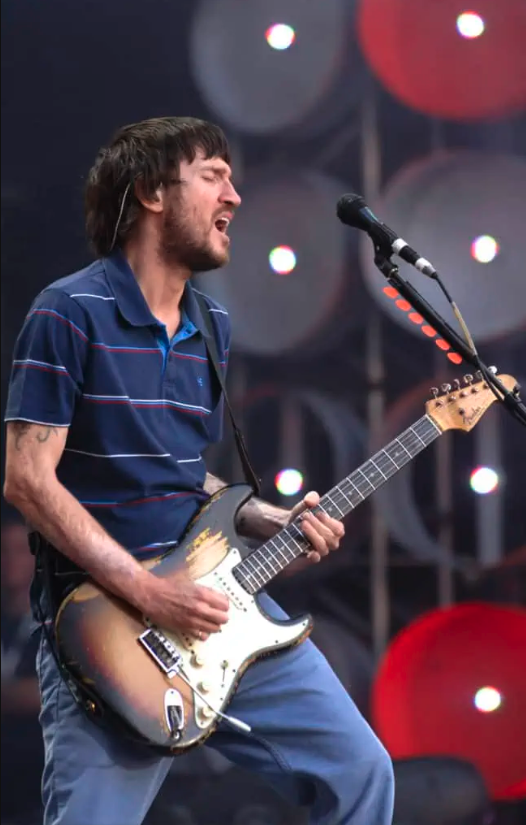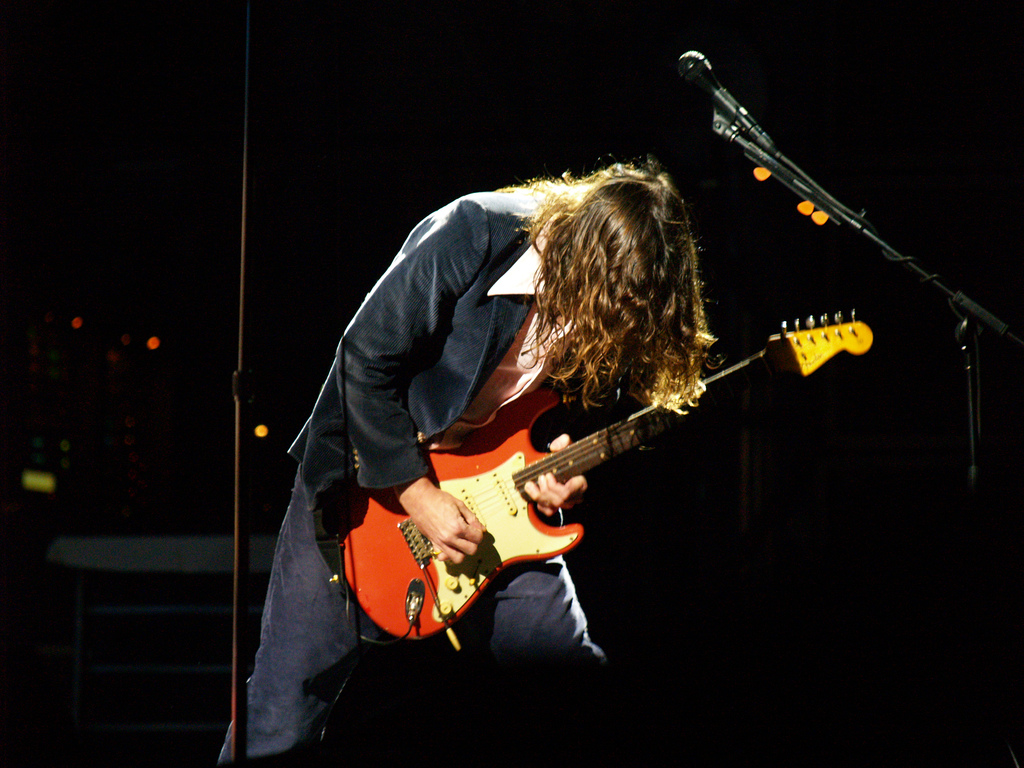
John Frusciante has made a lasting impact as a member of the legendary rock band, Red Hot Chilli Peppers. Blending punk, funk, and alternative rock, Frusciante’s style has played a vital role in shaping the band’s sound.
Frusciante’s ability to craft memorable and evocative guitar parts has solidified his status as one of the most influential guitarists of his generation.
From the iconic riff of “Under the Bridge” to the climatic solo of “Wet Sand” to the elegant acoustic playing in “Cabron”, there’s no doubt that Frusciante’s playing is synonymous with the band’s sound.
Introducing the first legend in the Guitar Tones at GAK series – John Frusciante. In future articles, we’ll delve into other top guitarists and the gear needed to get their iconic tone. Let us know which guitarist’s rig and tone you’d like us to explore next!
Skip Ahead
Funky Rhythms, Melodic Riffs and Soulful Solos
Defining Frusciante’s Unique Guitar Tone
The Playing
The Guitars
The Amps
The Pedals
How do I sound like John Frusciante?
Conclusion
Funky Rhythms, Melodic Riffs and Soulful Solos
Frusciante’s distinct style, influenced by guitar legends such as Jimi Hendrix, Syd Barrett, and Frank Zappa, became a defining feature of the Chili Peppers’ success. Seamlessly weaving funky rhythms, melodic riffs, and soulful solos, he created a sonic landscape that deeply resonated with fans.
Thanks to the magical combination of Frusciante’s incredible songwriting and playing, Chad Smith’s funky yet bombastic drumming, Flea’s intricate and captivating basslines and Anthony Kiedis’ hooky vocals, RHCP would achieve immense commercial success and become a global smash.
The Red Hot Chilli Peppers, after selling millions of records and selling out stadiums around the world, eventually received induction into the Rock and Roll Hall of Fame in 2012.
Jump Back To The Start
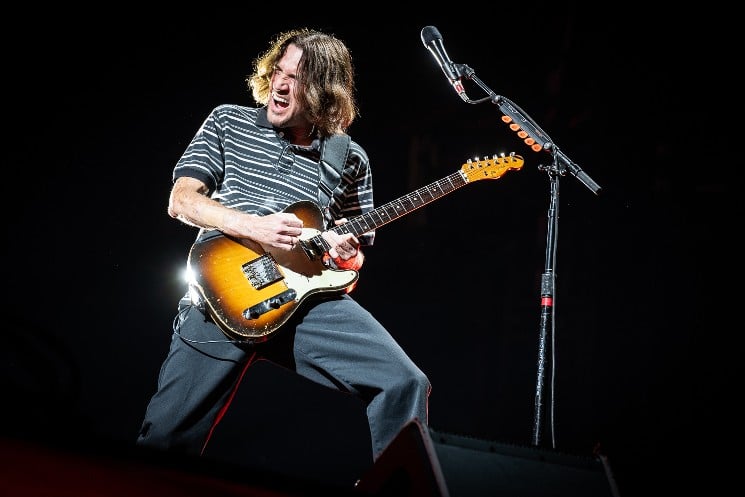
Defining Frusciante’s Unique Guitar Tone
At its heart, John Frusciante’s guitar tone is expressive, diverse and rhythmic. Many guitarists classify his sound as a blend of rock, blues and funk. However, Frusciante also incorporates other styles in his eclectic approach to the guitar.
A fundamental part of Frusciante’s tone is cranking vintage Marshall valve amps. He usually favours a Major head and a Silver Jubilee head for his dynamic and raw tone. He then enhances his tone with effects pedals, running them straight into the amp’s input.
For extra gain and solo sections, Frusciante often drives his Marshall amps with gain/boost pedals. His go-to’s are a Boss DS-2 Turbo Distortion, MXR Micro Amp or an Electro-Harmonix Big Muff.
An Ibanez WH-10 wah pedal, a Boss CE-1 chorus and MXR Dyna Comp have also been mainstays on Frusciante’s pedalboard.
The previously mentioned effects form the core of John Frusciante’s pedalboard. Other pedals are usually used for a specific song. Examples include the Line 6 FM4 Filter Modeller on “Throw Away Your Television,” the Line 6 DL-4 on “Don’t Forget Me,” and the Moog MF-101 on “Dani California.”
Jump Back To The Start
How To Achieve John Frusciante’s Tone: The Playing
If you want to emulate John Frusciante’s inimitable tone, the first thing you need to do is learn his parts and solos. In addition to learning the notes, you should learn everything else behind them. You want to become familiar with how he plays the guitar, even if you have the budget to buy the exact gear he uses.
Does he slide into a note or bend up to it? Does he use any vibrato? Is he digging into the strings or hitting them softly? Is he letting notes ring into each other or quickly cutting them off? Getting to grips with all of this will bring you closer to sounding like him (and grow your vocabulary as a guitar player).
The fact is, if you gave John Frusciante a battered acoustic guitar or a Squier Stratocaster that’s plugged into a small practice amp, he would still sound like himself. The inverse is also true. If you were lucky enough to play through Frusciante’s rig, chances are you’d sound like yourself.
Discovering the details and nuance in Frusciante’s playing will help you emulate his tone a lot more authentically. And the best part is, you can do this without spending money on gear! The only investment is time and patience.
Now that’s out of the way, let’s dive into the fun part – the gear John Frusciante uses.
Jump Back To The Start
How To Achieve John Frusciante’s Tone: The Guitars
While John Frusciante has played a wide variety of guitars over the years, his closest association is with the Fender Stratocaster. Frusciante favours vintage Strats from the 60s and frequently uses a heavily worn 1962 model in 3-Tone Sunburst.
RHCP vocalist Anthony Kiedis purchased this specific 1962 Fender Stratocaster and gifted it to Frusciante upon his return to the band in 1998. At the time, Frusciante had either sold his guitars or lost most of them in a fire. This Strat ensured he had a quality guitar to use with the Chilli Peppers.
Frusciante clearly has an affinity for this guitar, using it for the majority of a Red Hot Chilli Peppers performance.
His go-to Strat is usually swapped out for alternate tunings or if a song needs a certain guitar. Examples include a Gretsch White Falcon on “Californication”, a Telecaster on “Parallel Universe” or a Gibson Les Paul Custom on “Readymade”.
Alternatives
A genuine 1962 Fender Strat in clean condition can cost up to £50,000. Suffice it to say, they can be costly and beyond most people’s budgets. Don’t fret, there are plenty of more affordable alternatives that can deliver Frusciante-esque tones.
Fender Custom Shop ’60 Stratocaster Relic, Roasted Maple With Rosewood, Chocolate 3 Tone Sunburst
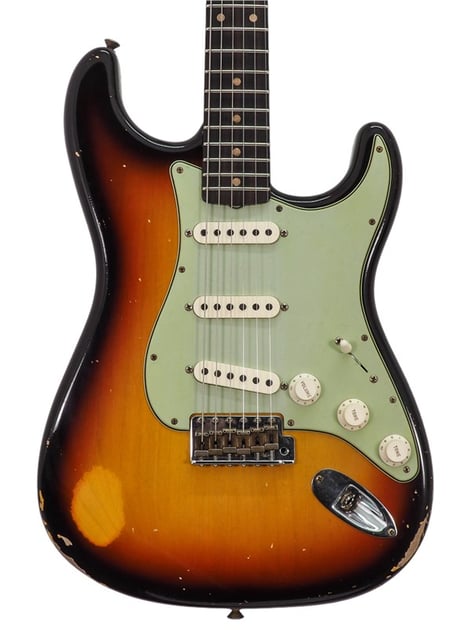
This Fender Custom Shop ’60 Stratocaster in 3-Tone Sunburst is a truly exceptional guitar. No one knows what makes a vintage Fender special more than the Fender Custom Shop. It’s this incredible expertise that’s imbued in all of their creations.
If you’re looking to experience the magic of a Golden Era-made Fender without the astronomical price tag, a Custom Shop model is the best you can get. Combining a vintage-inspired spec with the playability and reliability of a modern guitar, this Custom Shop Strat is the ultimate fusion of classic and contemporary.
With its aged 3-Tone Sunburst finish and 60s-inspired pickups, this Stratocaster has a look and tone that John Frusciante fans are sure to appreciate.
Fender American Vintage II 1961 Stratocaster
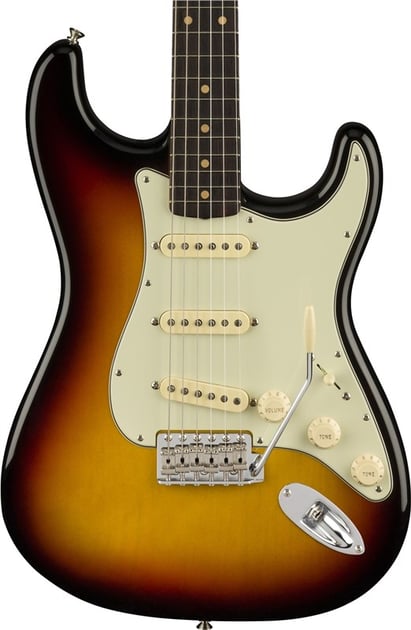
The American Vintage II series is an excellent choice for guitarists looking to own a period-correct Fender guitar. Each model in the range is a spot-on recreation of the guitar or bass it’s based on, aside from the slightly larger Vintage Tall frets.
The 1961 Stratocaster features Pure Vintage ’61 single-coil pickups, which are meticulously voiced for that quintessential early-’60s Strat tone. From the nitrocellulose finish to the slab rosewood fretboard, this guitar shares a lot in common with Frusciante’s go-to Stratocaster.
The American Vintage II 1961 Stratocaster is so faithful to the original, it’s as if you went back in a time machine to the ’60s and bought it brand new.
Fans of Frusciante’s second-favourite guitar, a 1954 Stratocaster that featured heavily on Californication and By the Way, should check out the Fender American Vintage II 1957 Stratocaster in 2-Colour Sunburst.
Squier Classic Vibe ’60s Stratocaster, 3-Colour Sunburst
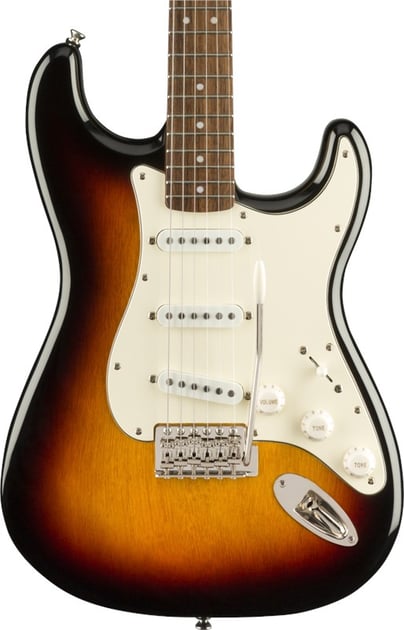
The Squier Classic Vibe ’60s Stratocaster in 3-Colour Sunburst is an excellent choice for Frusciante fans who want to emulate the RHCP guitarist at an affordable price point. With its 1960s-inspired headstock markings and vintage-tint neck gloss, this Squier Stratocaster oozes a vintage Fender vibe.
A trio of Fender-Designed alnico pickups deliver the crisp and articulate Strat tones you know and love. The “C” neck profile and 9.5″ fretboard radius present a comfortable and inviting playing experience that’s great for beginner players.
Fender American Vintage II 1963 Telecaster, 3-Colour Sunburst
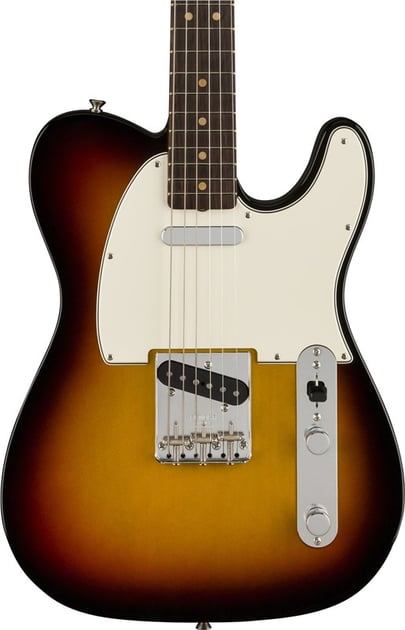
In addition to favouring his ’60s Strats, Frusciante gained renown for actively using a 1960 Telecaster Custom. Two of his main influences, Syd Barrett and Jimmy Page, inspired him to use a Tele. It featured on a few Californication tracks, including “Easily” and “Scar Tissue”, and throughout By the Way.
This Tele Custom has also been a mainstay of Frusciante’s live guitars, including RHCP’s monumental Slane Castle performance.
The Fender American Vintage II 1963 Telecaster is a superb alternative if you want to emulate Frusciante’s 1960 Tele Custom.
Like Frusciante’s Tele, the 1963 Telecaster features a nitrocellulose 3-Colour Sunburst finish and a slab rosewood fretboard. The Pure Vintage ’63 pickups are specially voiced to deliver authentic Golden Era ’60s Fender tone.
Gretsch G5422TG Electromatic Classic Hollow Body, Gold Hardware, Snow Crest White
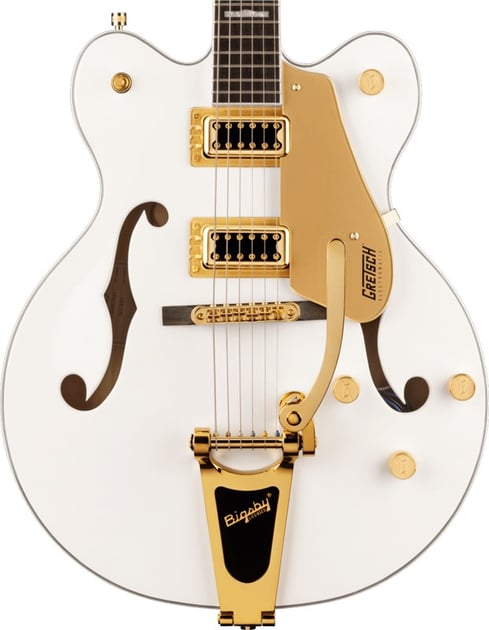
For that distinctive “Californication” tone, the Gretsch G5422TG Electromatic Classic is a top choice. It sports a maple body, a Bigbsy vibrato bridge, a sophisticated Snow Crest White finish and gold hardware, in a similar vein to Frusciante’s White Falcon.
If you’re looking for an electric guitar with a resonant, clear and detailed tone at a keen price point, this Electronmatic model is well worth your attention.
Jump Back To The Start
How To Achieve John Frusciante’s Tone: The Amps
John Frusciante’s main stage amp rig usually consists of two different Marshall heads, a vintage 200W Major and a Silver Jubilee. For cleaner tones, he opts for a Fender Showman head into a Marshall cabinet.
Frusciante has also used other Marshall amps throughout the years, including a JCM800 (Mother’s Milk) and a JTM-45 (Californication). Ultimately, a cranked Marshall stack is a fundamental part of the John Frusciante tone.
“In the Chili Peppers, I always have a Marshall Major, Marshall Jubilee, and my old Fender Stratocasters”. – John Frusciante, Vintage Guitar, 2009
Marshall 2555X Silver Jubilee Vintage Reissue
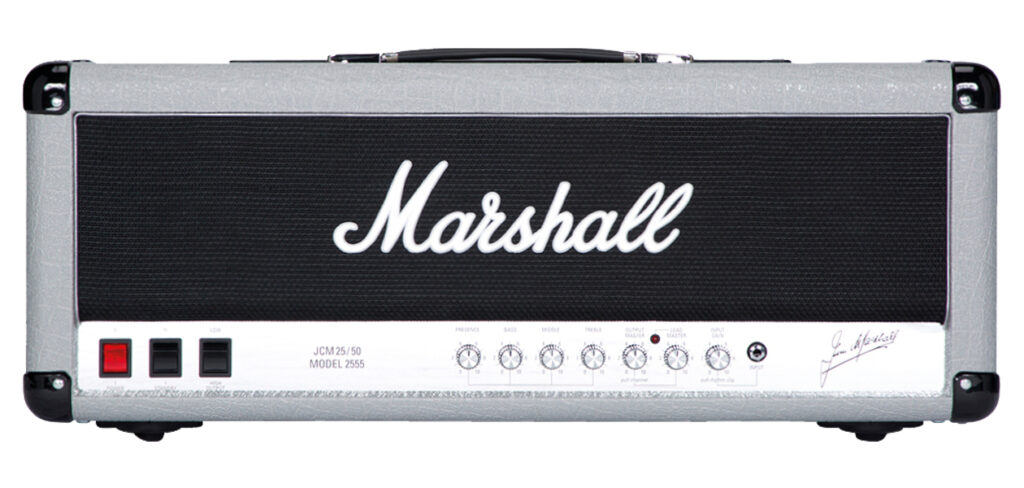
The Marshall 2555X Silver Jubilee Vintage Reissue is a modern iteration of the one Frusciante uses. This is an incredibly high-quality valve head that’s made in the UK with premium components.
Marshall were very faithful to the original when designing this reissue so you can count on it to deliver that sought-after Silver Jubilee tone. Plus, it’s far more reliable, affordable and tour-ready than a vintage unit.
Marshall 1959HW Plexi Handwired Super Lead 100W Valve Head

The Marshall 1959HW Plexi 100W valve head is a fantastic alternative to the Marshall Major. Major heads pack 200W, an extraordinary amount of volume and sonic muscle. They’re also rare and quite expensive when they do appear on the second-hand market.
The Major was created at a time when PA systems were nowhere near as powerful as they are today. Guitarists of the day relied on high-wattage amps to convey the sound to a large audience.
The Major is essentially a Plexi with increased power. Before the Major, guitarists such as Pete Townsend were combining two 100W Super Lead heads. The Major allowed them to achieve the same volume with a single amp.
If you want that Major tone, the 1959HW head will provide a similar flavour at half the wattage. A 200W amp will likely be too much for the vast majority of guitarists anyway! Your bandmates probably won’t be happy if you turn up to a gig or rehearsal with a 200W Marshall stack (as amazing as it would sound).
Marshall ORI50H Origin 50W Valve Head

The all-valve Marshall Origin ORI50H head is an affordable way to achieve Frusciante-style amp tone.
The Tilt control allows you to transition between two voices based on classic Marshall amps, including the 1959SLP and JTM-45. The innovative Powerstem power-reduction technology lets you adjust and tailor the ORI50H to any home, rehearsal and gig situation.
There’s also a DI output that you can run directly into a mixing desk for a quieter stage or into your audio interface for home recording.
Jump Back To The Start
How To Achieve John Frusciante’s Tone: The Pedals
There are some key pedals involved in achieving the John Frusciante tone. Fortunately, many of them are affordable effects pedals that are readily available.
The pedals that we’ll cover comprise the main ones that John Frusciante is known for using. These have been staple effects pedals in Frusciante’s rig for a long time.
Honourable mentions include the MXR M236 Super Badass Variac Fuzz Pedal, the MXR M300 Reverb Pedal and the MXR M169 Carbon Copy Analog Delay Pedal, which have been featured in his recent rigs.
Boss DS-2 Turbo Distortion Pedal

The Boss DS-2 Turbo Distortion has been a part of John Frusciante’s rig since 1991. It was mentioned by Frusciante in an interview around the time of the Blood Sugar Sex Magik. Since then, it’s been featured heavily on every subsequent Red Hot Chill Peppers album.
Check out the chorus of “Dani California” if you want to hear a great example of how John Frusciante uses the Boss DS-2 distortion.
To use the DS-2 in the style of John Frusciante, you want to run it into a slightly overdriven amp. Then, set the pedal to Mode II and crank the Level, Tone and Distortion knobs high. The cascading gain stages should give you that big, thick distorted tone.
If you’re running a clean amp with a lot of headroom, such as Fender Twin Reverb or a Roland Jazz Chorus, you can run the DS-2 into a Marshall-style pedal.
The Wampler Plexi-Drive, Origin Effects RevivalDRIVE Compact, Carl Martin PlexiTone and NUX Plexi Crunch are all superb options at a range of price points.
Electro-Harmonix Big Muff Pi Distortion Sustainer Pedal

John Frusciante has used a few different Electro-Harmonix Big Muff pedals over the years.
A vintage “Black Russian” Big Muff was spotted on Frusciante’s board during the tour for Californication. It was later replaced with a US-made Big Muff Pi on the By the Way tour. An EHX English Muff’n then took its place in late 2006. As of 2022, Frusciante has been seen using the Big Muff Pi again on the road.
Frusciante often uses the Big Muff during solos for a singing, sustained tone. It’s usually stacked with a DS-2 for extra gain and a mid-range boost. By boosting the mid-frequencies with the DS-2, Frusciante adds clarity and definition to a potentially muddy tone.
We recommend going for a Big Muff Pi if you want to sound like John Frusciante. It’s affordable and a classic stompbox that’s worth having in your arsenal. A Nano Big Muff Pi and Little Big Muff Pi are great alternatives if you want to save space on your pedalboard.
MXR M133 Micro Amp Boost Pedal
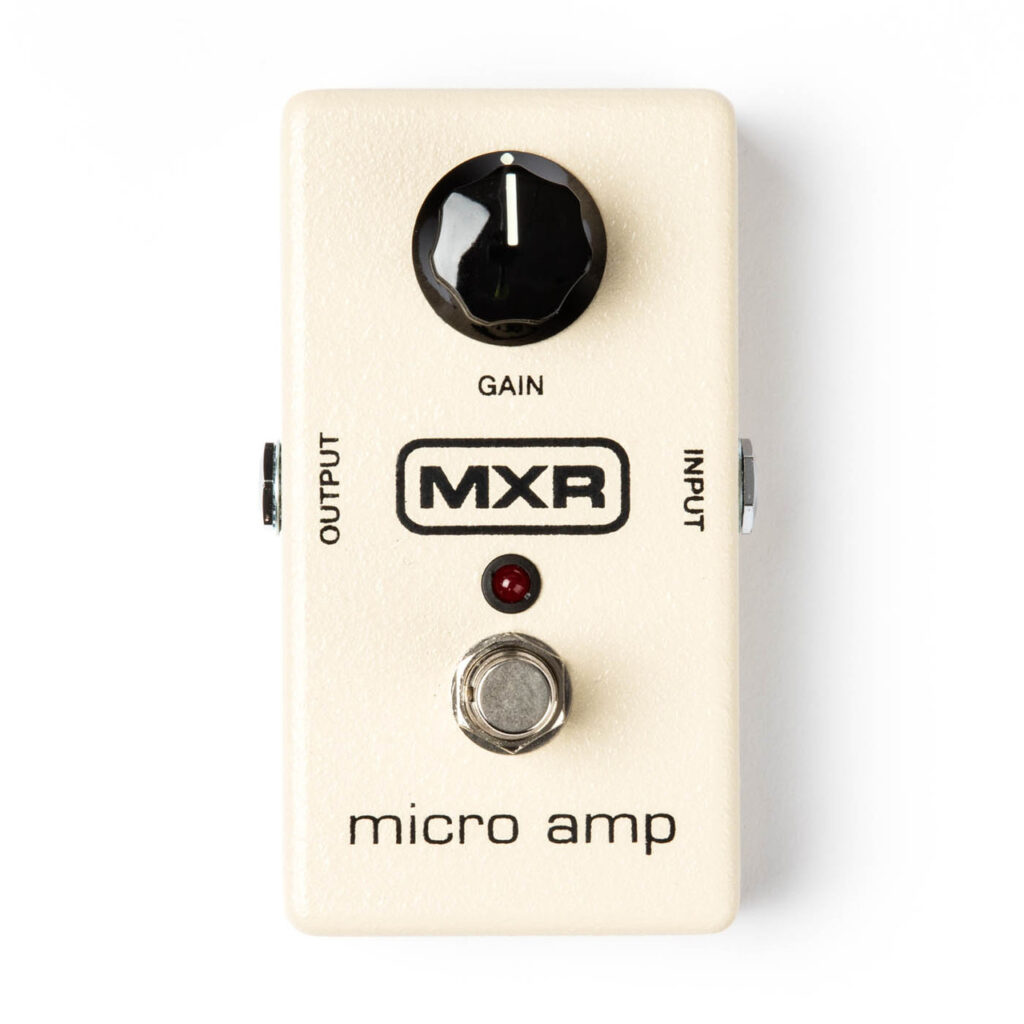
The MXR Micro Amp first appeared on John Frusciante’s pedalboard around the By the Way tour. After Frusciante rejoined the Red Hot Chilli Peppers in 2019, the Micro Amp has remained present on his most recent pedalboards.
The specific way in which Frusciante employs the Micro Amp boost pedal isn’t certain. Because the Micro Amp provides clean boost (extra volume without adding gain), it’s likely that he uses it to push the front end of his amps for more pre-amp crunch.
Nowadays, it looks like he’s running it after two DS-2s and an SD-1 Super Overdrive and before his Big Muff Pi. In this context, he could use the Micro Amp to boost the level of the DS-2/SD-1 combo and drive the input of the Big Muff harder for more sustain.
Boss SD-1 Super OverDrive Pedal
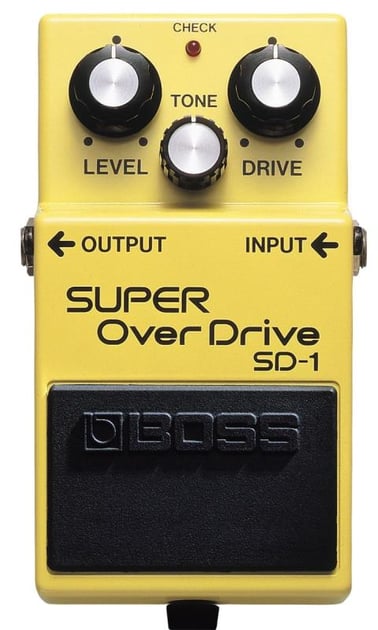
The Boss SD-1 overdrive has been seen on John Frusciante’s pedalboard since the Unlimited Love tour. According to a Howard Stern interview, the SD-1 is light crunch tones. It’s stacked with a DS-2 for more gain and a second DS-2 for a screaming lead tone.
Even though Frusciante could afford high-end boutique pedals, a lot of the pedals he uses are affordable and easy to find. He demonstrates that you don’t need expensive equipment to achieve great guitar tone and find your unique sound.
MXR M102 Dyna Comp Compressor Pedal

An MXR Dyna Comp has been a fixture on John Frusciante’s current pedalboard with the Red Hot Chilli Peppers. He’s been using it to add more sustain to his clean tone. It can get you a lot closer to the squashed “Under The Bridge” intro tone and “Mellowship Slinky in B Major” solo tone.
“Sometimes the Dyna Comp was just exactly what I needed in terms of getting the right amount of sustain on clean things, and having a more Tatty-like kind of sound”. – John Frusciante, Total Guitar, May 2022
Renowned guitarists such as David Gilmour, The Edge, Steve Lukather, and Adam Jones have also utilised the Dyna Comp. Aside from helping you sound like John Frusciante, the Dyna Comp is simply a fantastic all-around compressor pedal.
For funky rhythm playing, country picking, clean soloing and more, a compressor is a useful tool to have on your pedalboard.
MXR M101 Phase 90 Pedal

John Frusciante started using an MXR Phase 90 around the Mother’s Milk/Blood Sugar Sex Magik era. Whilst a Phase 100 pedal was during the Californication sessions, notably at the end of “Parallel Universe”, a Phase 90 was used on the tour.
A Phase 90 returned to Frusciante’s pedalboard in 2022 after being swapped out for a rare Moog MF 103 Phaser during the By the Way tour.
Boss CE-1 Chorus Ensemble
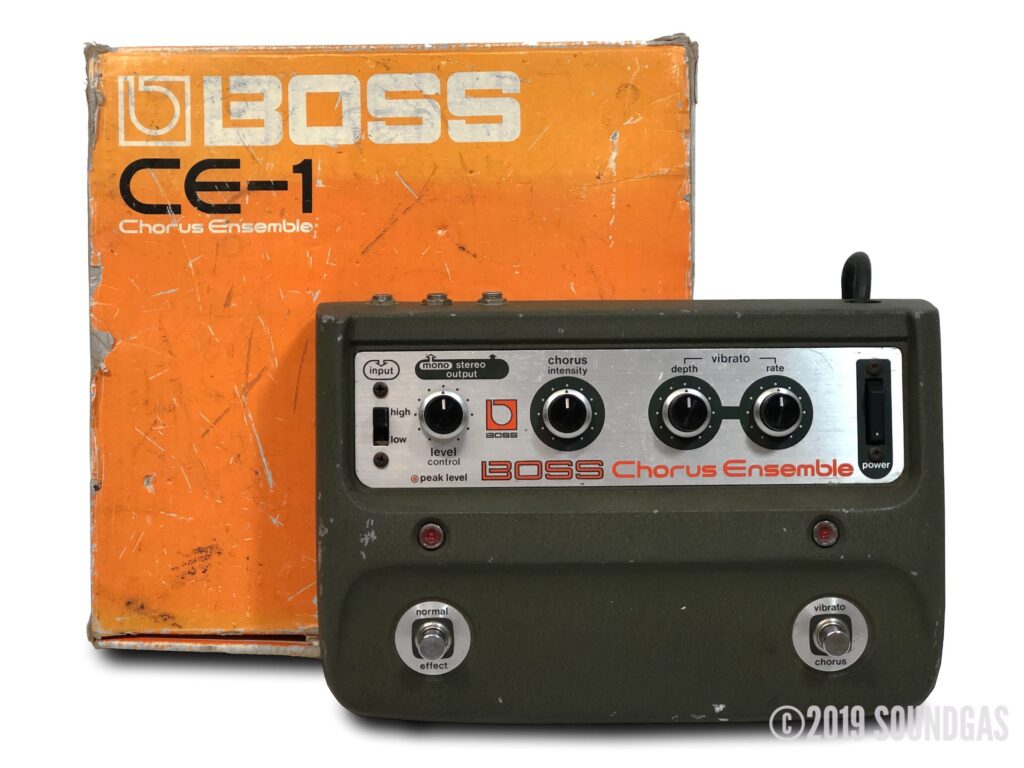
The Boss CE-1 Chorus Ensemble is a legendary effects pedal that’s highly sought-after by pedal collectors. This stereo chorus effect is essentially the same as in Roland’s Jazz Chorus amps. Its highly regarded for its rich, wide and lush character.
John Frusciante has been using a Boss CE-1 in Red Hot Chilli Peppers rig since around 1990. He uses it as a splitter between two amps. Today, it splits the signal between his Marshall Major and Silver Jubilee heads. The Major is set to a cleaner sound whilst the Silver Jubilee has a crunchier tone.
You can hear the CE-1 in action in the “Under The Bridge” outro.
“Another pedal is a Boss Chorus Ensemble, which I use to split the signal in my rig”. – John Frusciante, Vintage Guitars (USA), April 2009
Original Boss CE-1 units are expensive and hard to come by on the second-hand market. However, there are alternatives out there that recreate its sound at a more attainable price and in a more pedalboard-friendly footprint.
Examples include the Boss Waza Craft CE-2W Chorus Pedal and Universal Audio UAFX Astra Modulation Machine.
Ibanez WH-10 V1 Wah Pedal
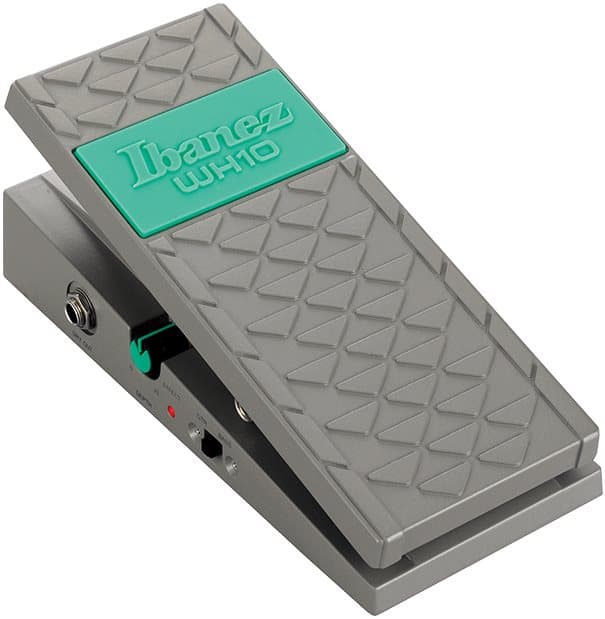
The Ibanez WH-10 is John Frusciante’s main wah pedal and is a crucial part of his tone. There are many examples of him using the WH-10 to extraordinary effect on RHCP recordings, including “She’s Only 18”, “Hey” and “Dani California” on Stadium Arcadium and “If You Have To Ask” on Blood Sugar Sex Magik.
Frusciante received his first WH-10 wah pedal back in 1988, alongside two Ibanez guitars. The WH-10 and two guitars were gifts from the Japanese guitar company. Whilst the guitars ended up being smashed onstage, the WH-10 was kept.
Although he experimented with a Dunlop CryBaby over the years, Frusciante ended up preferring the wider frequency range of the original WH-10.
“Ibanez WH-10 is my standard wah since Blood Sugar Sex Magik. I don’t think there’s a better wah. When we were making Stadium Arcadium, there was so much wah I figured I’d use a variety of pedals and there wasn’t one that came close to the Ibanez”.
“There are a couple of CryBabys that are cool, but for me, they weren’t as good, because I use a lot of feedback. I want something that when I put it in one position, one note is going to feedback, and when I put it in another position, another note is going to feedback”.
“You just have more variation with the Ibanez because there’s a wider frequency range”. – John Frusciante, Vintage Guitar (USA), April 2009
Frusciante is known for using a WH-10 V1, the original model. These can only be found on the second-hand market. The Ibanez WH-10 V3 wah pedal is a new, updated version of the classic wah. It features a more durable die-cast chassis and switchable true bypass.
Jump Back To The Start
Well, how do I sound like John Frusciante?
So you’ve spent time learning Red Hot Chilli Pepper’s songs, getting John Frusciante’s key techniques under your fingers and know more about the equipment he uses. What’s the next step?
Start with a Stratocaster (either a Fender or a Squier depending on your budget) and a Marshall valve amp (ideally a head with a 4×12 cab equipped with Celestion speakers). A Marshall Plexi-style pedal can get you in the tonal ballpark.
Next, you want to get ahold of the key pedals that John Frusciante uses. Fortunately, many of them are affordable and usually plentiful. We recommend getting a DS-2, a Big Muff Pi, a Dyna Comp, a WH-10 V3 and a CE-2W if you want to cover the majority of Frusciante’s tones.
A multi-fx pedal like the Line 6 HX Effects or HX Stomp can cover delay, reverb and all the one-off effects you’d need for other Chilli Peppers songs.
Jump Back To The Start
Conclusion
We’ve seen that the essence of John Frusciante’s sound doesn’t hinge on high-end, exorbitant gear, but rather his incredible playing technique and musicality.
His tone is a testament to the fact that musicians don’t need to break the bank to achieve an inspiring guitar tone, and you too can use these insights to shape your signature sound.
Sounding like John Frusciante is as much about understanding his choice of gear as it is about tapping into the spirit of his musical ethos – creating beautiful, compelling music with whatever tools you have at your disposal.
Jump Back To The Start
